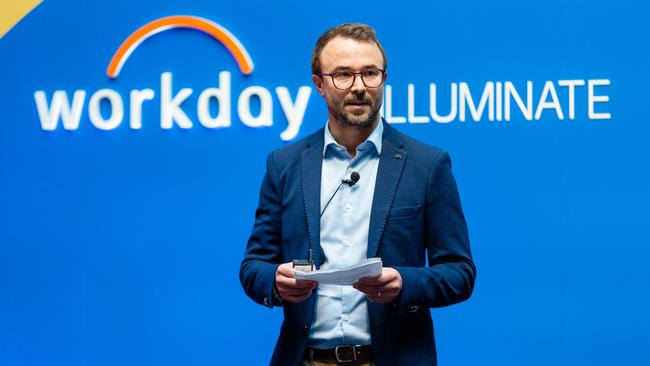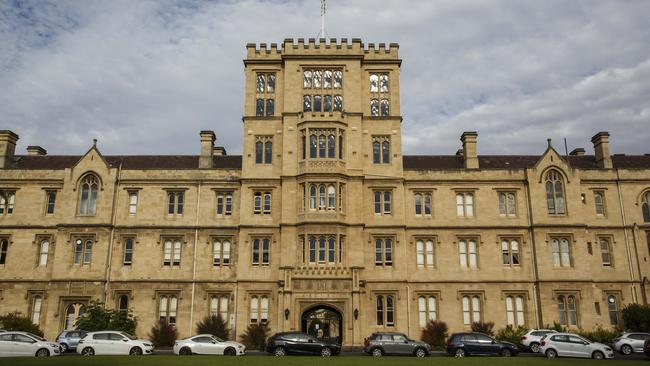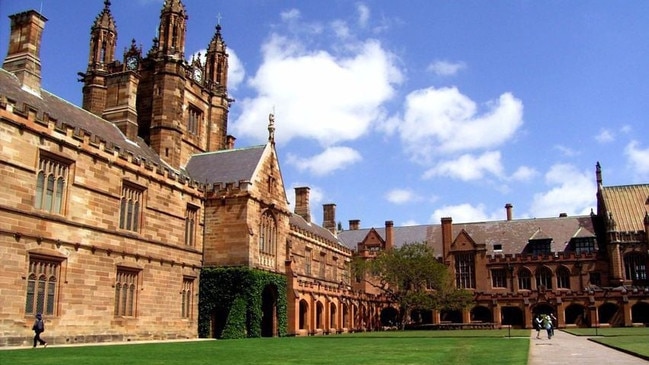Big tech’s plan to reverse Australian universities’ slide down global rankings
Silicon Valley says it has a solution to help hoist Australian universities back up the world rankings list, after they were all pushed further down the latest global league table this year.

Silicon Valley says it has a solution to lift Australian universities up the world rankings list after they fell down the latest global league table this year.
California-based Workday, which specialises in human resource management software, launched its new student engagement platform, Workday Student, in Australia this month.
The product harnesses artificial intelligence and was developed with input from a local advisory board and 40 universities around the world, including Melbourne, Macquarie and the University of Auckland.
The platform is designed to reduce student attrition, improve the student experience and improve the university’s reputation by eradicating legacy and paper-based systems.
Underscoring the scale of the problem, Workday head of education for Australia and New Zealand Cade Elg said he visited a university in Melbourne recently and found it had to complete structural works to accommodate the amount of paper-based files.
“They had to work with their engineering team to reinforce the floor because of the amount of paper they were still processing, and this is in the internet era where there is tooling available that simply doesn’t require that,” Mr Elg said.

He said it added unnecessary cost to universities which were facing funding challenges and debating a cap on lucrative international students.
“Funding for universities is always a major challenge, and there is a huge cost burden involved in the administration and the manual processing of those paper forms, having really disconnected and clunky systems,” Mr Elg said.
“And so while Workday Student will uplift the experience for students, we’ve also seen a huge reduction in costs for our customers using this system as well. Once they remove their legacy systems and manual processes it allows a lot of their staff to focus on a lot more strategic work, rather than processing paper.”
The Times Higher Education world university rankings 2025, released in October, revealed that 17 Australian universities slipped backwards this year.
The University of Melbourne was Australia’s highest-ranked university for the 15th consecutive year – but fell two places to be ranked 39 out of 2860 universities worldwide. Monash University, Australia’s second-highest ranked institution, fell four places to 58. The University of Sydney was ranked 61 – its worst performance since 2018.

“Another key metric for universities in Australia is around retention, which we see a lot of key challenges in right now. The students are coming into the system and for various reasons, taking a long time to complete their studies and get their degree, but many are just dropping out completely,” Mr Elg said.
“We see technology being a major barrier for the student experience, but also in enabling institutions to better advise and support those students and put some mechanisms in place that might help keep those students inside the education system.”
Mr Elg said four of the eight US Ivy League universities had adopted Workday Student, which provided a more intuitive interface to help students navigate their coursework.
“Universities in 2024 are still using the same software to manage their students as what they were using when I was at university in 2003.
“This is a generation of kids that are using their phones so much that the government … introduced legislation to stop them from using their phones when they’re 16, but when they rock up to campus, they’ve got a set of tools that are basically ancient in technological terms.”
University of Melbourne chief information officer Byron Collins said the institution had adopted Workday’s HR tool but was yet to use the new student offering.
“At the moment, what we are in the midst of doing is implementing their HR and finance solution, and that’s due to go live next year. It’ll be replacing a legacy solution from another technology vendor. We’re not, at this point, planning to take what is a brand new student system, new to market, and wade straight into replacing our current student system,” Mr Collins said.



